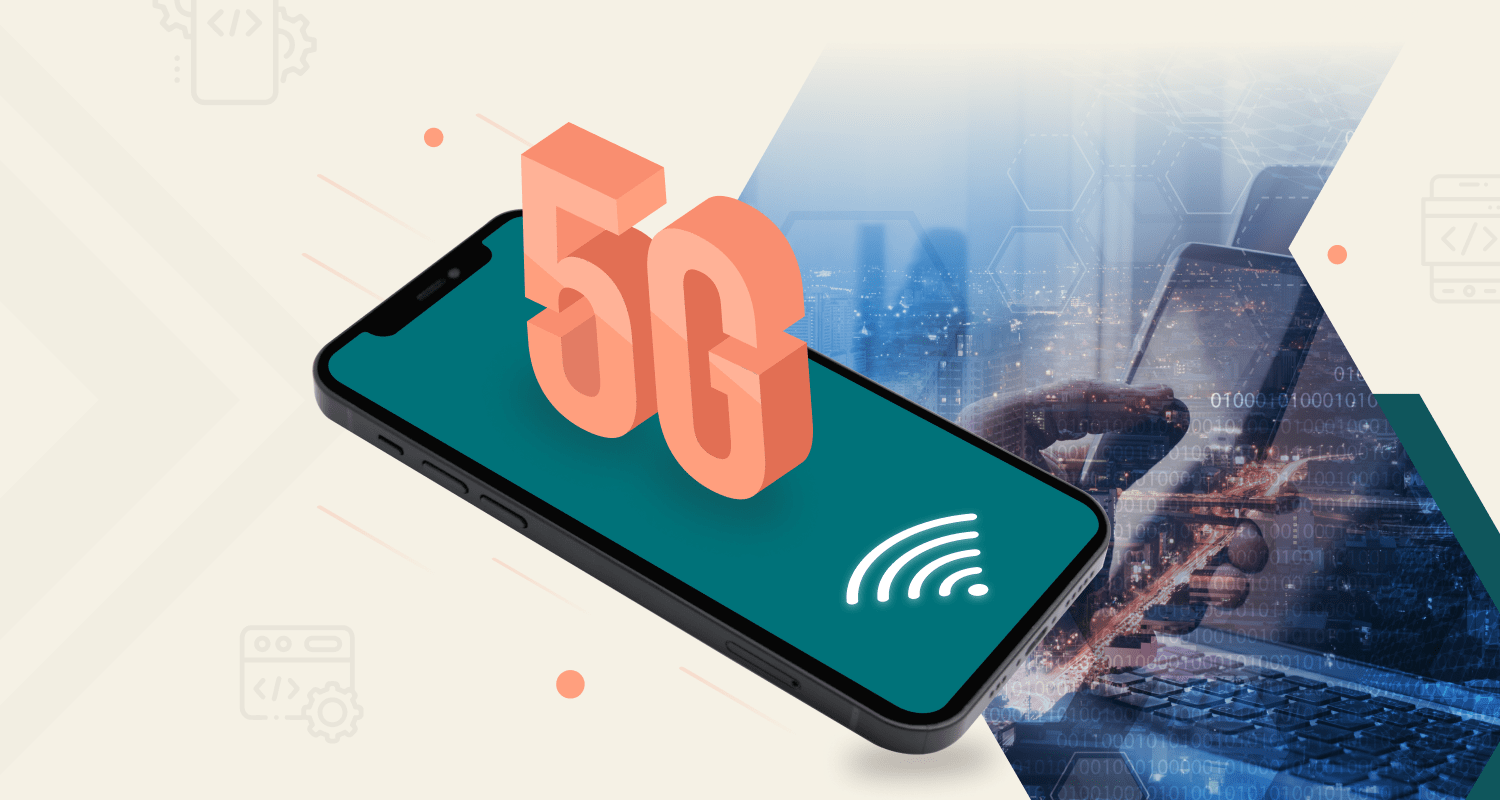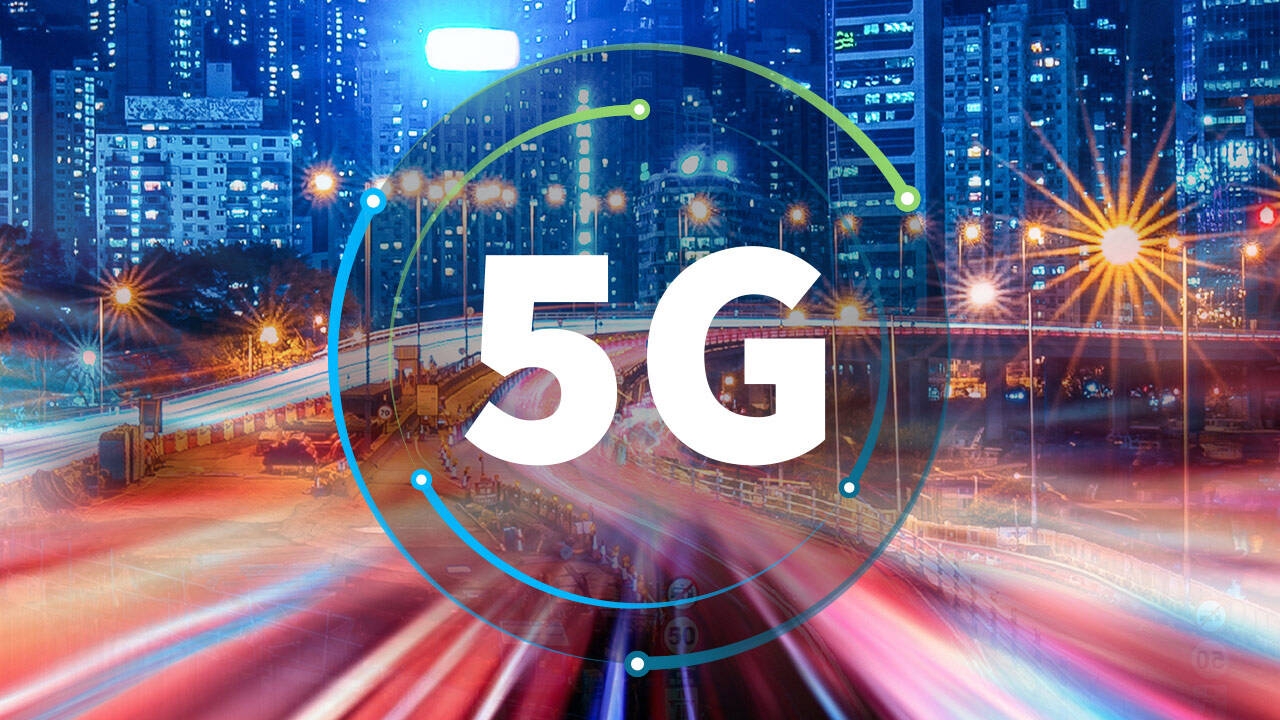
The hype in the industry surrounding 5G technology and its impact on the subsequent generation of connectivity and services is exciting, and not just users but also developers, tech-driven enterprises, and carriers share this enthusiasm. According to a GSMA report from earlier this year, 1.4 billion devices—or 15% of the global mobile market—will be using 5G networks by 2025. The introduction of 5G networks will significantly alter how people use smartphone applications and create new opportunities for the mobile app development industry. Future 5G networks will provide developers the opportunity to try new things, build new platforms, and make apps that give users quicker, more individualized experiences.
In this article, we’ll delve into how 5G’s benefits can influence and influence the development of new mobile applications, as well as how they can enhance the performance of currently available mobile apps.
A description of 5G
5G networks promise to boost mobile connectivity and improve customers’ smartphone experiences with connectivity rates that can reach roughly 10 gigabits per second. That is ten times faster than current wireless technologies. High-speed data transmission will significantly alter how people communicate. In terms of how apps are made, there are additional variables that will generate new chances for mobile app developers.
Users now have access to consistently quick and dependable wireless internet everywhere they go thanks to this innovation. Large amounts of data can be sent more quickly and easily by allowing for speedier downloads. The 5G network will alter users’ perceptions of mobile devices and applications. 5G will mark a turning point in the era of digitization. The golden era of cellular technology will begin with the introduction of 5G technology. 5G technology is anticipated to improve user experience by making it possible for smartphones to connect to networks more quickly.

What new effects will 5G technology have?
Thoughtful individuals are working hard to advance technology, create new applications, and modify the ones that already exist. Technology is evolving swiftly. In such a case, 5G is a revolutionary innovation. It makes it possible for computer experts to download files more quickly and makes the transfer of millions of bytes of data simple and rapid.
The introduction of the 5G network will change how consumers utilize mobile devices and applications. Along with fast data transfer, the 5G network provides a lot of benefits for mobile app developers.
How it works
To better understand what makes this new technology so unique, let’s look at how it works. Following are the three different spectrum bands that 5G will employ:
- High Band Spectrum: The high band spectrum is the main contributor to 5G’s remarkable performance. It offers up to 10 GBPS, the fastest speeds. The lack of adequate coverage this spectrum offers inside of buildings, however, is its main drawback.
- Between the high-band and low-band spectrums is the mid-band spectrum. It moves swiftly in comparison to the low band spectrum but has poor wall passing. Its maximum speed cap can reach 1 Gbps.
Connection providers use the low-band spectrum predominantly in the US. It also covers a lot of ground and has incredible wall penetration. This spectrum is another name for the 1GHz band. - The brand-new network architecture of 5G is paving the way for the development of communications. The technology is ready to upend several industries by offering seamless connected experiences that are superior to fixed internet.
That mobile app developers would have to put forth extra effort to support this cutting-edge technology makes logical. If you’re unsure about where to start, don’t worry. We listed the main characteristics of 5G that affect the development of mobile applications.
The new communication ataşehir escort architecture of 5G, which gives its users greater services, is fundamentally different.
You Might Also Enjoy Learning How Much 5G Costs to Make an App
The Most Notable 5G Technology Features are:
Lower Latency
When using their networks and mobile devices to make critical decisions in real time, users of mobile devices are particularly concerned about delays. Current 4G networks typically have a latency of 50 milliseconds, however 5G networks will have a latency of about one millisecond, reducing network interference and delays.
Network Density Improvement
Connection density is the capacity of a network to allow the successful transmission of many messages, even in a heavily populated area. The number of concurrent devices that 4G can support will decrease as the average number of connected devices per user (such as smartwatches and smartphones) is expected to increase. Only roughly 2,000 linked devices can now be supported per 0.38 square miles by 4G networks. This weakness is addressed with 5G, which can support up to 1 million networked devices in the same space.
Enhanced Tempo
Customers can download any amount of app in only a few seconds if they have access to 5G. For smartphone app developers who depend on in-app purchases and other monetization techniques to make money from their apps, 5G offers a lot of benefits in addition to its speedy app download speeds. The ability of 5G networks to increase streaming speeds for entertainment apps will increase user engagement with mobile apps.
Additional Battery Life
Reduced latency and increased speed increase the likelihood of less power consumption. The battery life of smartphones and other IoT devices is also doubled by 5G. Customers can use their phones for longer as a result.
Future Development
Due to 5G technology’s high bandwidth, almost zero latency, and greater connection density, new possibilities that were unthinkable with 4G have emerged. As an example:
- Industry IoT for the cloud using AR/VR Smart Car Technology
- Control of virtual machinery
- The Smart City
- Mobile eHealth
- Greater Bandwidth
5G is designed to operate over a number of frequencies in order to offer better connection. Mobile apps will work effectively with all spectrum bands, including the Low band (below 1 GHz) used by LTE, the Mid band (1 GHz to 6 GHz), and the High band employing millimeter waves (mmWave).
High radio frequencies and brief wavelengths are used by the newest radio technology, 5G. (30GHz to 300 GHz). It will therefore provide GPS-enabled devices greater accuracy than 4G.

But how will 5G development in communications impact the creation of agile apps?
This brings us to the section that follows:
- Mobile Application Development and 5G.
- By making it simpler to create apps for all types of linked devices, seamless 5G IoT implementation would increase the usefulness of IoT. The applications will make it possible for wearable technology, sensor-based machines, and smart gadgets to work together seamlessly.
They will be able to function at maximum efficiency while using less bandwidth and power. The speed and power of 5G can be combined with artificial intelligence (AI) and machine learning (ML) by developers to enable ambient computing within apps, enhancing their effectiveness.
A better and more seamless user experience will be encouraged as the use of linked devices spreads. In other words, by utilizing dependable technology like 5G on mobile apps, firms have the opportunity to increase profits.
Superior Video Streaming
Users can expect multimedia-rich user experiences from 5G applications. The technique will change video streaming by providing high-resolution live broadcasting at a faster rate.
Lower latency will enhance the performance of video applications. An extended battery life will enable uninterrupted viewing. Developers can use high-performing 4K movies to highlight products and services in the app. Users gain advantages on par with developers.
Additional Integration Opportunities for AR and VR
Network issues have prevented developers from widely integrating AR and VR into their mobile applications. The development of a better user experience will made possible by the speed and efficiency of data transport promised by 5G. These apps will function properly since 5G enables them to overcome bandwidth and latency problems.
They will be able to process greater volumes of data at significantly faster speeds, creating more engaging and dynamic experiences.
By allowing users to make adjustments and create products that are exactly in accordance with their tastes and requirements — all from their hand-held devices — AR and VR technologies have the potential to radically change how customers purchase. This can occur in a variety of sectors, including internet commerce, retail, cars, and sporting apparel. In the near future, think about developing 5G apps with integration for AR and VR. The likelihood of a healthy profit margin appears high.
Immersive technology’s introduction
The development of mobile apps using immersive 3D and AR may be helped by 5G. The development of mobile apps will change as a result of these applications. In-depth gaming and 3D printing are just two businesses that can benefit from their assistance in supplying 3D features.
These technologically advanced software programs will come in handy in a variety of industries, from building to medicine. In the near future, there will be a huge increase in the demand for 5g software development.
The Performance of GPS Has Improved
The development of mobile apps using GPS will increase the precision of information distribution. The enhanced speed and connectivity of the 5G network will guarantee real-time accuracy of results, boosting the functionality of navigational applications.
These apps will be advantageous to the automotive industry. They will improve the efficiency with which autonomous vehicles function. They can help provide better connectivity for wearables and other portable devices, which might be advantageous.
A better user experience for the app
The improved connectivity offered by 5G will speed up an app’s responsiveness by decreasing load times. The user experience would significantly enhanced by offering the app improved performance and visual clarity. Developers will be able to expand the functionality of the mobile app while enhancing UX. For those who love to play games, you will have smooth experience playing all game type. Some great game you can try out like Quordle, Mario, Car race,…
Conclusion
Even while it will take some time for users, developers, and businesses to fully benefit from 5G, the technology will be important in helping them adapt their products to changing consumer demands. There will soon be a greater need for 5G app developers. 4G technology won’t be able to handle the massive amounts of data created when mobile apps develop further. In fact, a number of studies demonstrate that network speeds change dramatically during the day depending on how many users connected, suggesting that 4G is already beginning to exhibit signs of overload. It would be worthwhile to look at your 5G technology options if you currently rely on this connectivity.
Support the newest mobile
Only 5G will be able to support the newest mobile applications and provide users with a richer user experience thanks to its promise of higher data transfer rates, lower latency, and improved connection density. In the following years, businesses should experience greater user retention rates and app income as a result. A new market for all the hardware, software, and hardware accessories needed to support the data-intensive environment of 5G networks will develop as the rollout of 5G networks picks up speed. In conclusion, enhancing user experiences will eventually boost user retention rates and app revenue.
